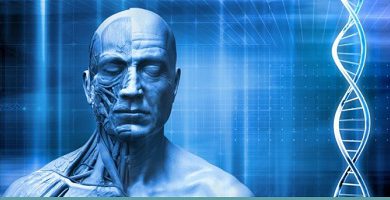What are living things?
We explain what living beings are, their characteristics and how their life cycle is. In addition, vital functions and types of living beings.
-
What are living things?
When we talk about living beings or living beings we refer to the various forms that life assumes throughout its history , from the simplest and microscopic beings to the complex life forms among which human beings themselves appear .
Living beings are tremendously diverse in complexity, size, intelligence and other differentiating characteristics , which allow them to adapt to different environments and compete with other living beings for access to the resources necessary to continue living and reproduce their species, transmitting to their offspring those characteristics, anatomical or behavioral. This is the adaptation and evolution of the species.
It is not very well known how life originated , and this is a matter of debate, since the bodies of living beings are composed of exactly the same elements as inanimate matter , although arranged in entirely different ways. In fact, in the body of living beings it is possible to find various doses of metals and inorganic elements.
Even so, living beings distinguish themselves from inert matter in that they try by all means to keep their chemical and biological structure balanced, that is, to stay alive, and at the same time to perpetuate the species.
If they fail to maintain their internal balance, living beings die, and their bodies decompose to their constituent elements.
-
Characteristics of living beings

Living beings share, within their immense variety, the following elementary characteristics:
- They keep their homeostasis . This term means the internal balance of matter and energy, essential for the organism to operate in a coordinated and non-chaotic manner.
- They are deadly and reproduce . All forms of life that exist die, eventually, since in the end the disorder ( entropy ) is imposed in the system after sufficient time, or when accidents and sudden changes occur that do not allow it to adapt in time. Life’s response to this inevitable reality is to reproduce: create new living beings that perpetuate the species and contain the genetic information of their parents.
- Consume energy . Life requires an energy expenditure to operate, and this energy is obtained from the environment through various mechanisms, which introduce matter to the body and subject it to chemical reactions.
- They react to their surroundings . One of the characteristics of living beings is that they do not exist apart from their environment and respond to their conditions, that is, they interact with it in different ways, and consequently also modify it.
-
Lifecycle
All living beings have a limited time of existence, during which they fulfill various stages of the so-called life cycle , which will be repeated in their descendants. These stages are:
- Birth . Living beings are engendered in various ways by their parents and come into the world in different stages of maturity , that is, in preparation for life.
- Power . Once born, living beings must feed for the rest of their existence, as it is the only method of obtaining the energy necessary to continue existing and to undertake changes in growth and maturation.
- Growth and maturation . Once a certain feeding point has been reached , living beings grow, that is, they enlarge their structures and gradually reach maturity, that is, the point necessary to reproduce.
- Reproduction . Whether sexual or asexually, living beings reproduce and give rise to new individuals of the species, whose life cycles will begin at that precise moment.
- Aging and death . After the necessary time, living beings will age, which means that their vital functions will deteriorate over time, until they stop operating properly and die.
-
Vital functions

The living beings fulfill throughout their vital cycles with three minimum vital functions, which are:
- Nutrition . The nutrition is obtaining matter and energy to stay alive, to repair the body and make it grow. According to this there are two types of living beings: autotrophs (they make their own food) and heterotrophs (they feed on the environment).
- Relationship . Living beings are related to the environment and other living beings, being able to flee from dangers and feed.
- Reproduction . Once a certain well-being is reached, living beings proceed to reproduce and perpetuate the species.
-
Types of living beings
Living things are classified based on a system of kingdoms, grouped by their common characteristics. These kingdoms are:
- Animals ( Animalia ). These are living beings provided with voluntary movement, mostly heterotrophs, which can be mammals, reptiles, birds, fish or amphibians.
- Vegetable ( Plantae ) . Non-mobile living beings, usually autotrophic and that carry out their feeding through photosynthesis , taking advantage of sunlight and water.
- Fungi ( Fungi ) . They can be considered an intermediate between plants and vegetables, as they are immobile and feed on decomposing organic matter, even parasitizing other living things.
- Protist ( Proctist ) . Monocellular living beings of a very varied nature, which are primitive forms of life. This includes algae and protozoa.
- Bacteria ( bacteriae ) . The smallest and simplest living beings of all, who inhabit the environment and many of whom lead an infectious life, within the body of other living beings.





